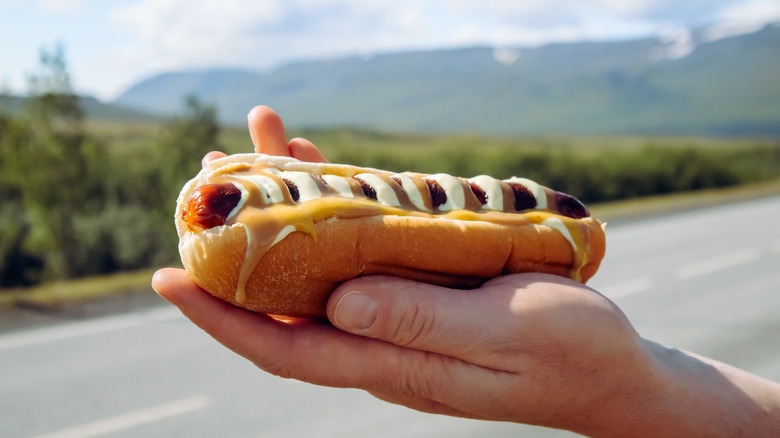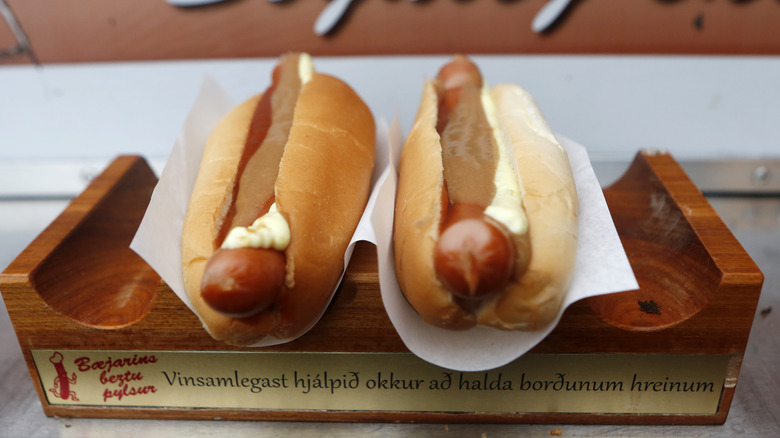What Makes Icelandic Hot Dogs Unique
Hot dogs are a legendary source of Icelandic culinary pride. Also known as pylsa or pulsa, hot dogs in Iceland can be made from a mixture of lamb, pork, and beef. While American hot dogs can sometimes be made from questionable ingredients, hot dogs in Iceland offer some of the finest grass-fed organic meats available. Casings encapsulating the bites of lamb, pork, and beef are natural, and the meaty servings are free from added hormones to yield the kind of flavor that has customers eager to stand in lines.
Lamb gives Icelandic hot dogs a unique flavor, particularly since the sheep in Iceland live pretty high-quality lifestyles. Compared to their friends around the world, Icelandic sheep are grazing on country farms and enjoy a cruelty-free existences. Plus, without any added hormones or pesticides, these sheep produce some delicious meat. Since there were more sheep than pigs in the early 20th century, Icelandic cooks used lamb meat to make hot dogs and wrapped them in paper to sell. Once wheat restrictions were lifted in 1948, however, hot dogs were placed into hot dog buns.
Not only is the Icelandic hot dog different from what we might chow down on in the United States, but the toppings crowning these beauties are a step up. From crispy fried onions and raw white onions to sauces called pylsusinnep and remoulade, this is a hot dog you'll have to try to make for yourself if you can't get on a flight.
Ingredients make the difference
To make remoulade, cooks mix mayonnaise, capers, mustard, and an assortment of herbs and spices. Remoulade can be flavored with turmeric, paprika, or garlic, so you may taste a variation in sauces from different restaurants. Pylsusinnep is a sweet brown mustard that adds the right amount of punch to an order. While many mustards are yellow or golden, this one is made with brown mustard seeds.
Icelandic hot dogs can be boiled or grilled just long enough to yield a toothy, juicy first bite. Some cooks will add beer to the vat in which hot dogs are boiled. For crispier dogs, frying and grilling makes for a crunchier snack. Should you be lucky enough to find yourself in Iceland, one stand has been passing out hot dogs since 1937. Bæjarins Beztu, which translates to The Best in Town, serves hot dogs rain or shine. Though the stand once doled out dogs topped with sauce made from skyr, if you order a hot dog with everything, you'll be passed a traditional lamb hot dog topped with Icelandic mustard, fried and raw onions, Remolaði sauce, and homemade ketchup made with apples. If you see a long line of customers, don't panic. Rumor has it that employees are rewarded for each hot dog sold, so expect lines to move quickly. Keep in mind that prices for hot dogs can vary, but plan on spending at least a few bucks for an Icelandic hot dog with all the fixings.

